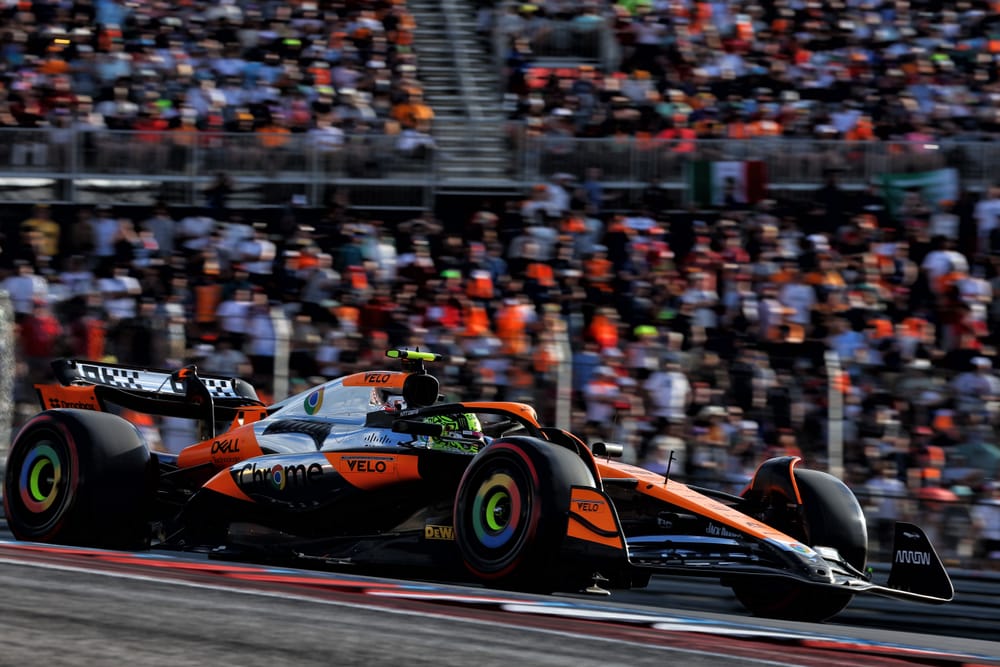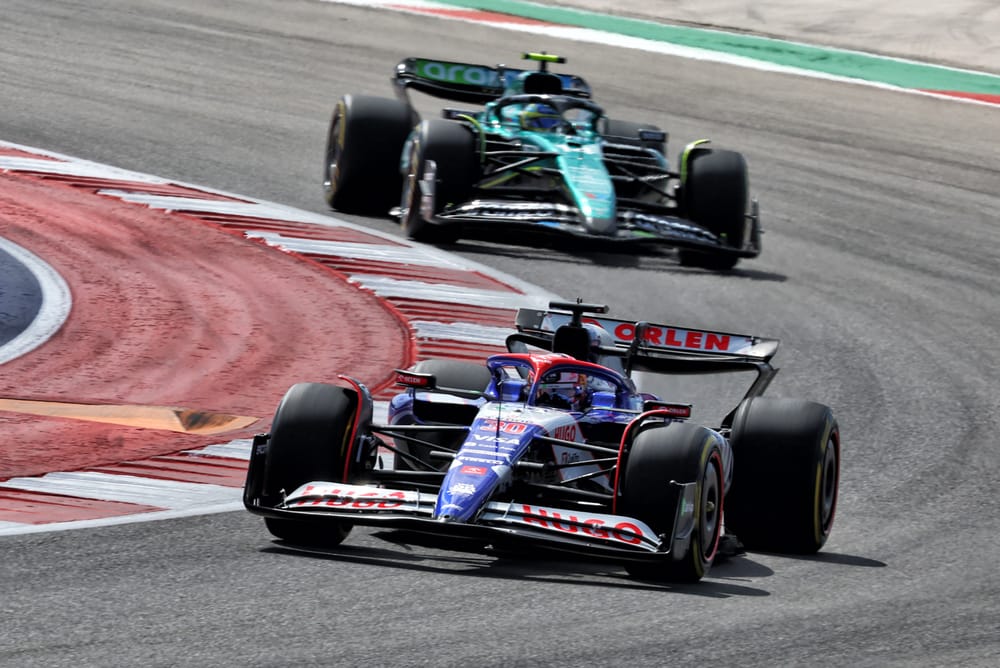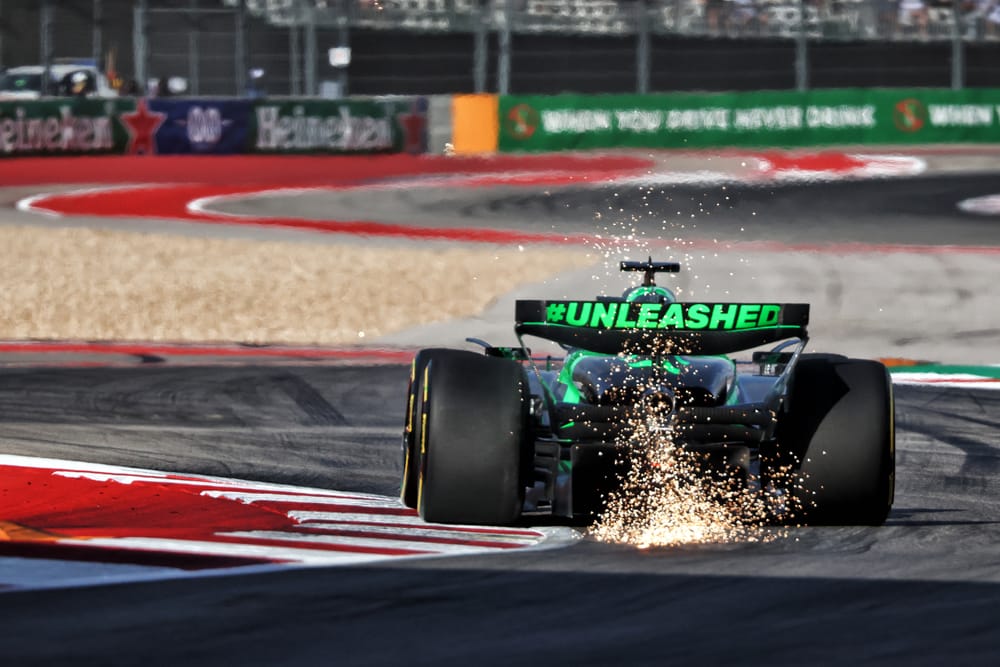Up Next

George Russell’s accident two corners from home saved Lando Norris’ bacon, keeping the McLaren Formula 1 driver on United States Grand Prix pole when he looked in danger of being demoted by Max Verstappen's Red Bull.
But while that may be termed a lucky pole, it was a phenomenal on-the-edge lap. It’s very rare you see a driver in this era keep a car on the absolute edge throughout the whole lap, using every millimetre of track width on the exits, really hanging it out but without losing momentum, that’s what he did.
It's little wonder he said he considers it the lap of his career. It might’ve been one of the laps of anyone’s career. Because the McLaren was not particularly quick around the bumps of the Circuit of the Americas.
In fact, depending upon whether it got its tyre pressures up, the McLaren sat on a knife edge between pretty poor (P10 and P12 in Q1) and OK.
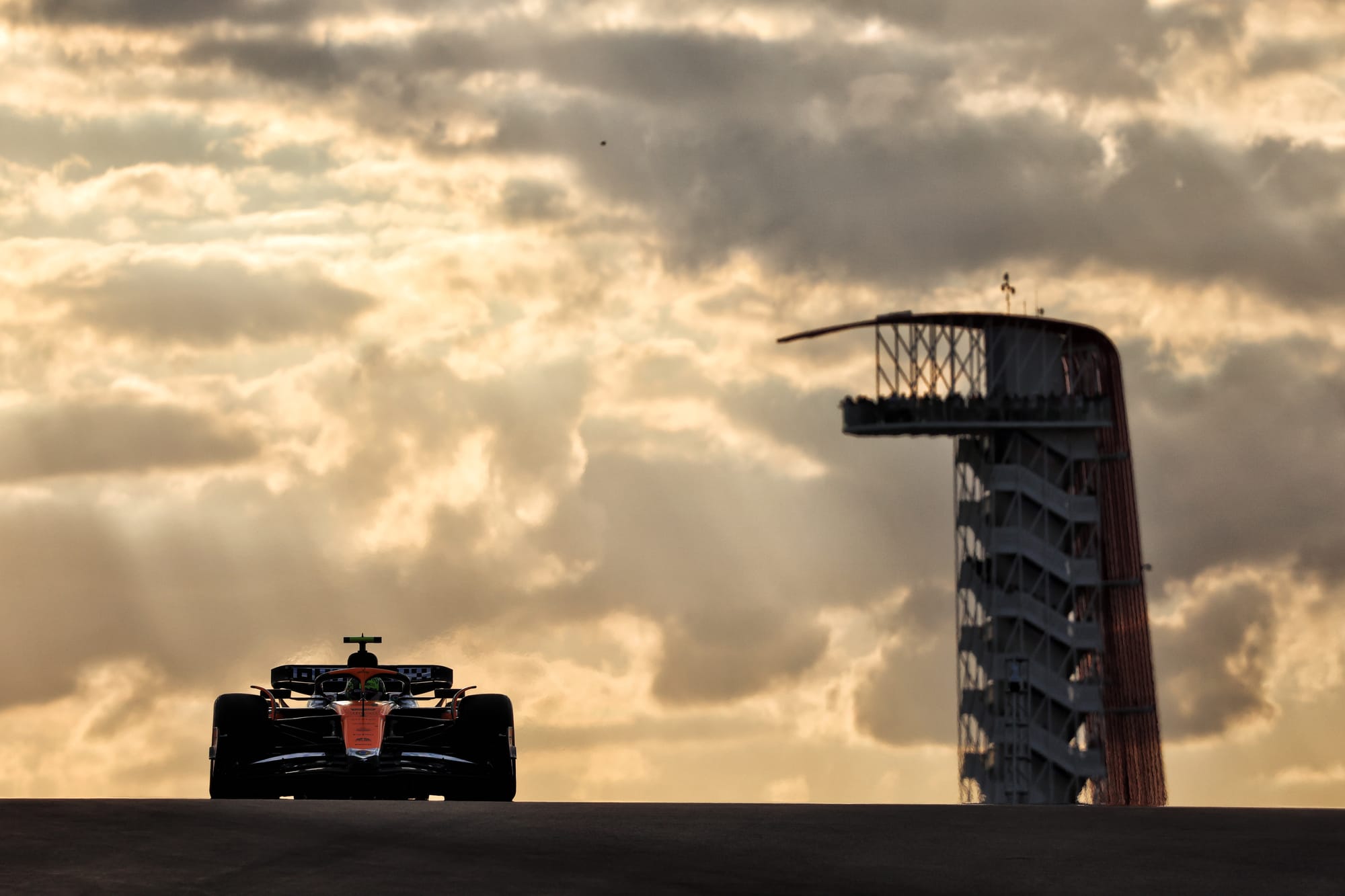
McLaren was scratching around here and was running incredibly low and stiff in an effort to squeeze all that was in it. That made its car a real handful through the Esses - which haven’t been resurfaced and remain bumpy.
The car to have through there was the Red Bull and it’s clear that the changes the team has been able to make (applied here only to Verstappen’s car) in the four-week gap have built very effectively on the progress seen since Singapore.
Through the Esses it was incredible, almost immune to the bouncing and bottoming of the others. But it would lose out to the McLaren and – especially – the Ferrari through the slower turns, of which there are several here.
But Max’s first Q3 run he lost a chunk of time at Turn 19 – more so than Norris suffered in his wild oversteering moment there. Max lost so much momentum, he had to take an extra downshift to recover momentum, yet still he was within hundredths of Norris. “I knew there was a pole lap in there,” said Max, “so I wasn’t too worried.”
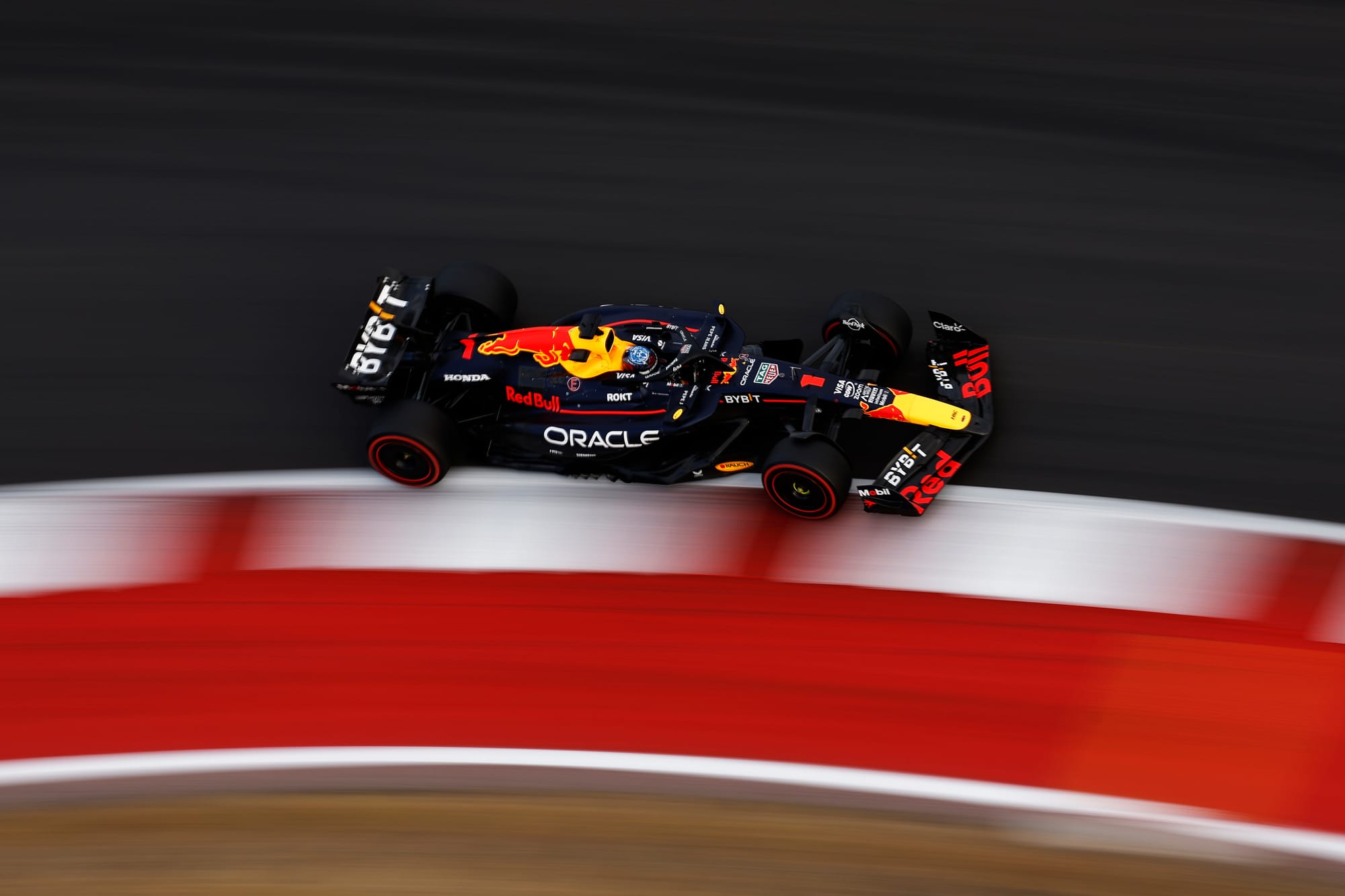
Except George Russell... Turn 19 again, but on the final runs. The Mercedes had been super-quick in sprint qualifying on Friday. But that was before everyone lowered their cars in response to the reduced severity of the bumps since the track’s resurfacing.
On the hotter track of Saturday, it was nothing like the same car. By his own admission, Russell was trying to find a time that wasn’t in it. Running as the lead car on track, the yellow flags his crash created meant no one was able to complete their second lap.
Obviously it was a blow to Verstappen. It was perhaps an even bigger disappointment to Carlos Sainz, because on that second Q3 run his Ferrari was somehow magically better than it had felt when he’d set his third-fastest time on the first runs, over 0.3s off Norris and Verstappen.
“I don’t know whether it was the fall in track temperatures, but for some reason, the car came alive," Sainz said. His time up to the end of the second sector wasn’t quite Verstappen-quick, having lost 0.15s to the Red Bull through sector 1, but he was looking like being a much closer P3 than the official times make it look.
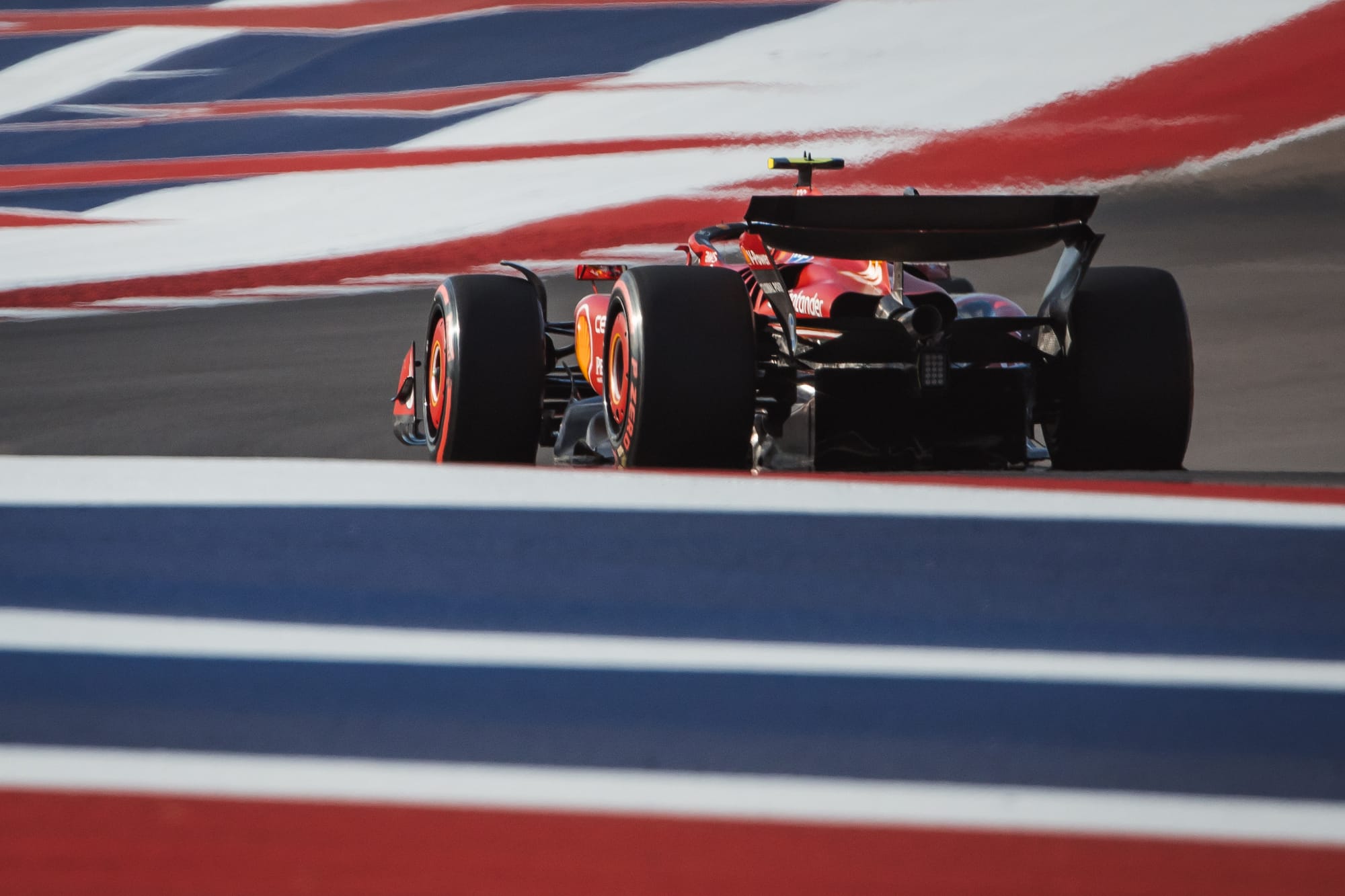
The Ferrari was super-quick in the slow corners, as it always is. But on the soft tyres its balance wasn’t quite good enough – until that final aborted run. On the mediums in SQ1 and SQ2 the day before it was conclusively the fastest car – and showed great race pace on those tyres in the sprint.
Sainz was taking great cheer from the fact that the car was as good as it was on the first conventional circuit since its big upgrade at Monza. “I thought it was a Monza/Baku special but this is a track with long combined corners, which is where we’ve struggled.”
On that final Q3 run, with the lower track temperatures, it looked like we were seeing its true soft tyre pace for the first time. Charles Leclerc was trailing by around 0.1s just behind, but comfortably clear of Oscar Piastri who just couldn’t conjure the same confidence in the McLaren as his team-mate and trailed by over half-a-second.
In fact, Norris had little confidence in the car before Q3. He trailed Verstappen by 0.3s in Q2, but a little pep talk from engineer Will Joseph. “Let the car come to you,” he advised. “Not too much combined.” This was a reference to not using up too much of the front tyres’ limited tolerance of combining breaking with lateral force on corner entry.
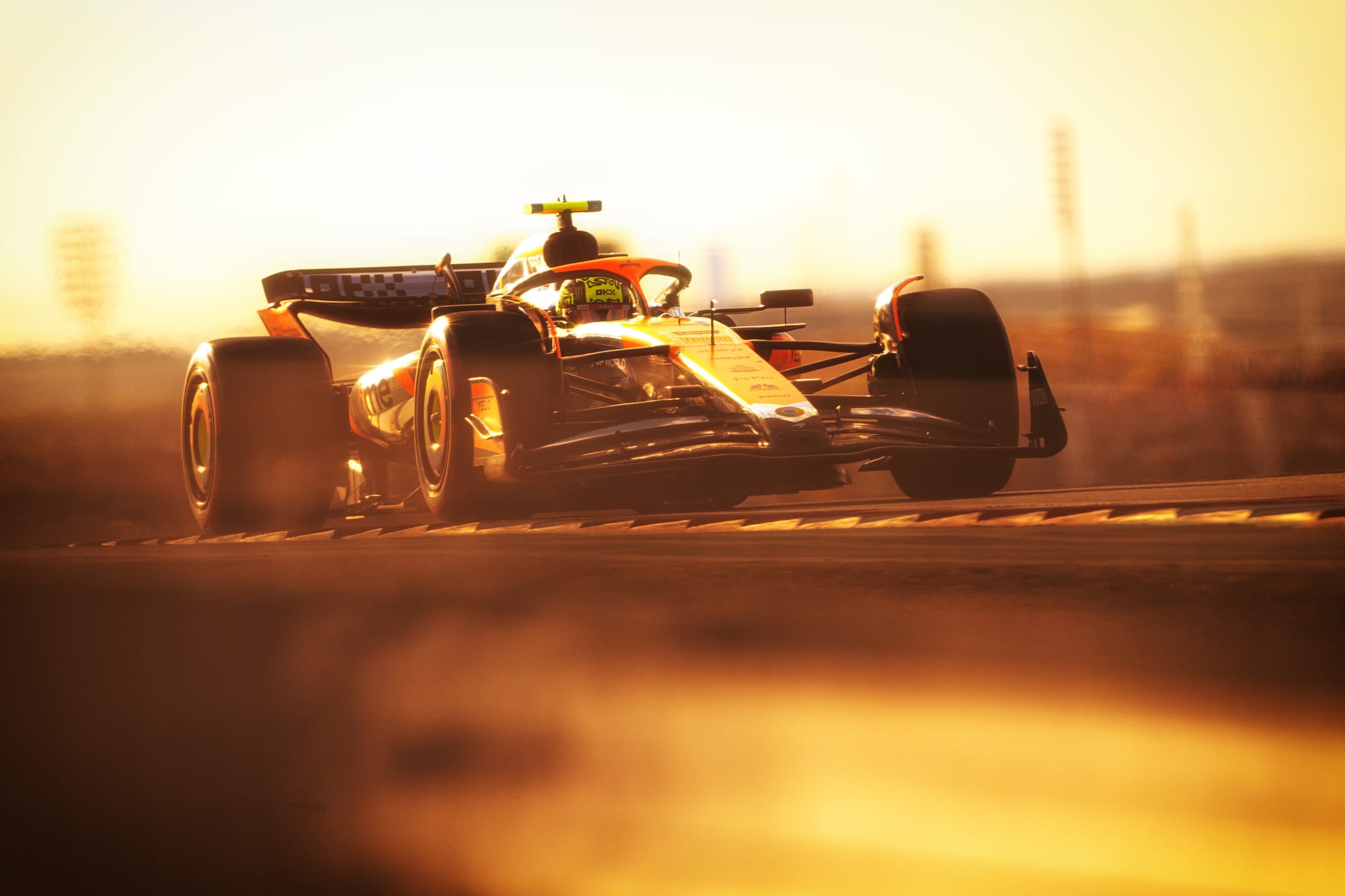
It’s something the Ferrari does very well but which the McLaren doesn’t really like. So he just hung it out – and when he did, with the car flying through those super-fast Esses, crashing onto its floor, the rear stepping out but still gripping, he got into a different zone.
But would Verstappen have pipped Norris for pole had Russell not crashed? His time up to the end of sector 2 (mid-way between Turns 12-13) was still 0.014s shy of Norris’ first run. In fact it was slightly slower at that point than Max’s own first run. But he was beginning to gain time in the remaining long corners which follow just before the yellow flags. It’s feasible he could have made that deficit to Norris up in the final sector. But not certain.
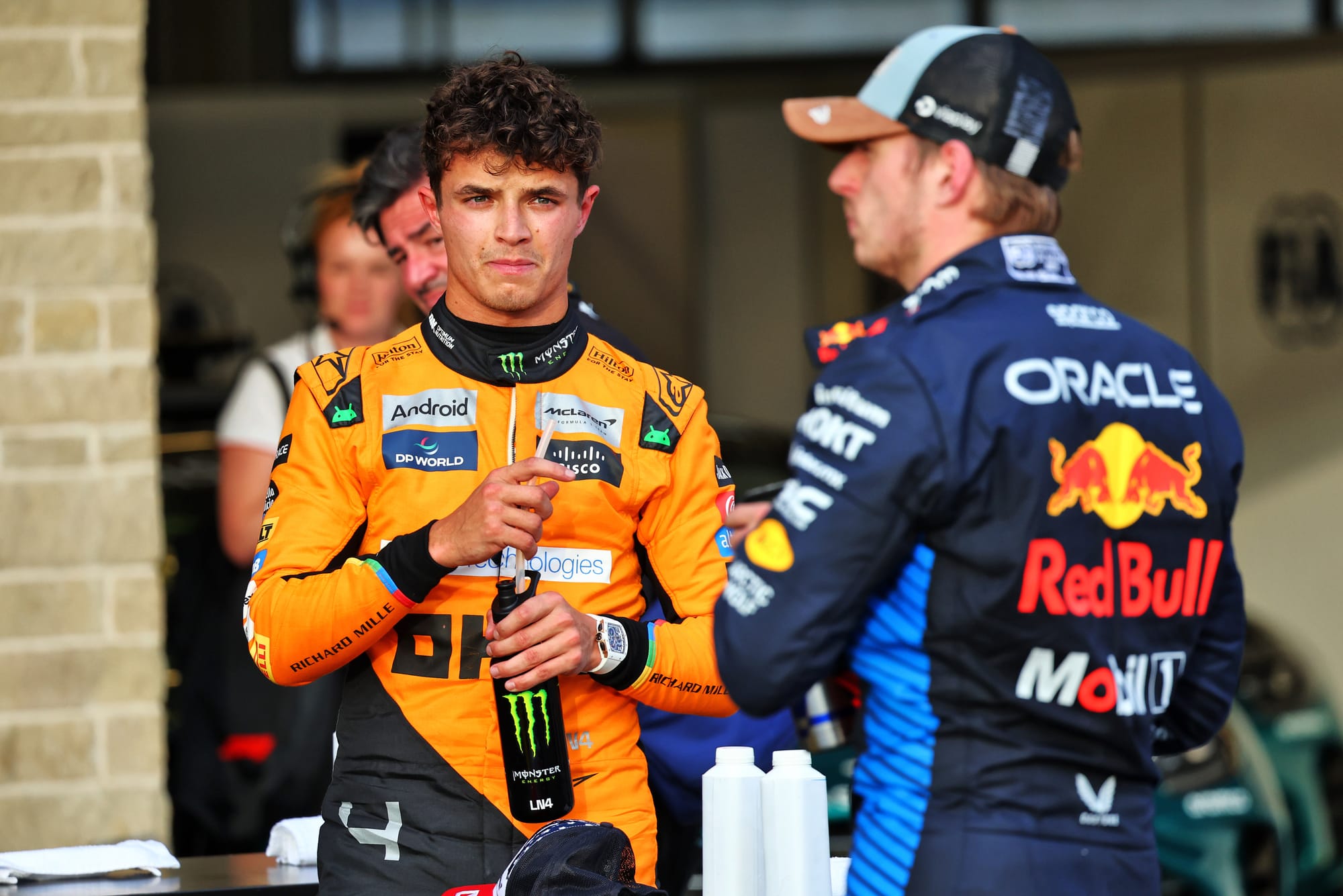
“It was a beautiful lap,” said Norris of his pole. “I knew I wasn’t going to be able to repeat it.” In fact his second attempt was already 0.23s slower by the end of sector 2.
“I risked a bit more – everywhere. The high-speed struggle compared to Red Bulls, I tried to limit that. Then the braking from [Turns] 12-16 – as soon as one part goes wrong there it all goes wrong, I hooked it up first time all weekend. It came together perfectly. You know when you do a lap and you think it’s not going to be any better than that? I pulled it out. We were behind Red Bull and Ferrari here.
“People might hate me for saying that, but although we’ve had the best car for quite a few races in the last few months it’s definitely not been every race. In Singapore we were, but not in the race before that Baku. Red Bull and Ferrari were quicker there. That’s what we believe. That was just two races ago. When you’re in the team you can confidently say where you are.”
The McLaren wasn’t as quick here as Norris’ lap made it look. Where was it lacking? “Bottoming and ride at high speed,” he said, “and compared to the Ferraris we lose time in the slow corners. Their slow speed is incredible. Singapore they were super-quick but just didn’t get it together in qualifying. Here we’re just not quite there, and the others have taken a step forward.”
That latter point is perhaps the most significant. The Red Bull hasn’t returned to its early-season superiority here, but it has re-found its fast corner performance without losing its balance on the slower turns – and that’s something it just could not do a few races ago.
It’s good enough to allow Verstappen to compete – and that’s a formidable prospect for the others.


